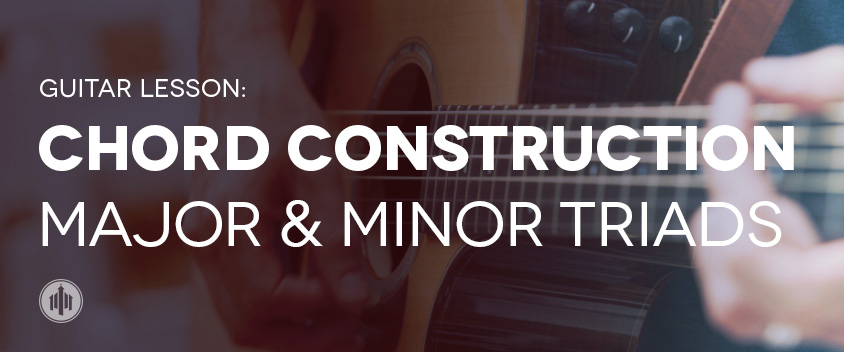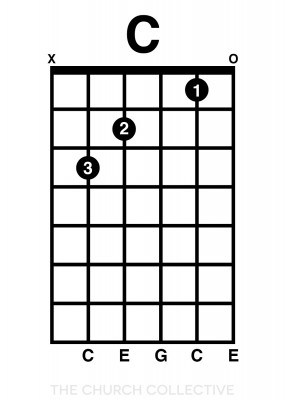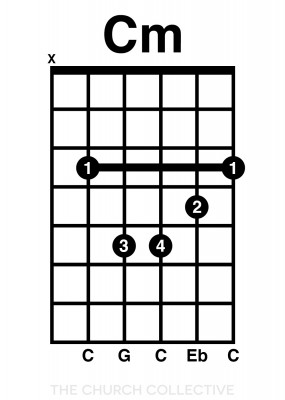
Be sure to check out the rest of the guitar theory series here.
An understanding of chord construction is important since it allows you to create musically correct chords in “non-standard” ways, expanding your tonal possibilities. Plus, this knowledge lets you create chords on the spot: you may have never memorized the fingering for an Ab chord, but with a basic knowledge of chord construction you can make ones up.
A chord is simply a grouping of two or more notes. The most common chords in music are “triads,” meaning they are made up of 3 notes. Your standard major chords (ie, “C”) and minor chords (ie, “Cm”) are perfect examples of triad chords, and that’s where we’re going to start our study of chord construction.
We’re going to use chords based on the C major scale in this example, since it is the simplest scale, having no accidentals (sharps or flats). Here is the C major scale, with degrees labeled.
| Degree: | 1 | 2 | 3 | 4 | 5 | 6 | 7 |
| Note | C | D | E | F | G | A | B |
The Major Triad
The major triad is created by combining the 1st, 3rd, and 5th tones of the major scale of the chord you are trying to create. A C major chord, then, is made up of the notes C, E, and G. Below is a diagram of a standard open C major chord on guitar. Next to each string that is played, I’ve written the actual note being played. Notice that the notes are simply C, E, and G.
On a guitar, of course, we have 6 strings, so notes are usually “doubled up.” Playing some notes more than others will “color” a chord differently, as does changing which note is the highest or lowest pitch in the chord. As a rule, the lowest note you play on any chord should be the “root” of the chord (ie, C), unless you are purposely playing an “inversion” (where a non-root note is played as the lowest note in the chord, ie, D/F#).
The Minor Triad
The minor triad is created by combining the 1st, flatted 3rd, and 5th tones of the major scale of the chord you are trying to create. A C minor chord is made up of the notes C, Eb, and G. Notice that a minor chord is only a half step different from a major chord! Below is a diagram of a standard C minor barre chord.



